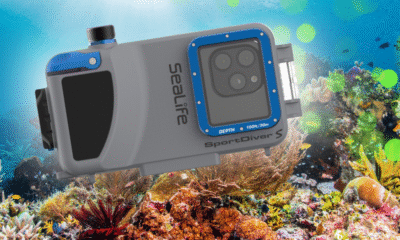Photography
Sony RX1R III Digital Camera: The Uncompromising Compact
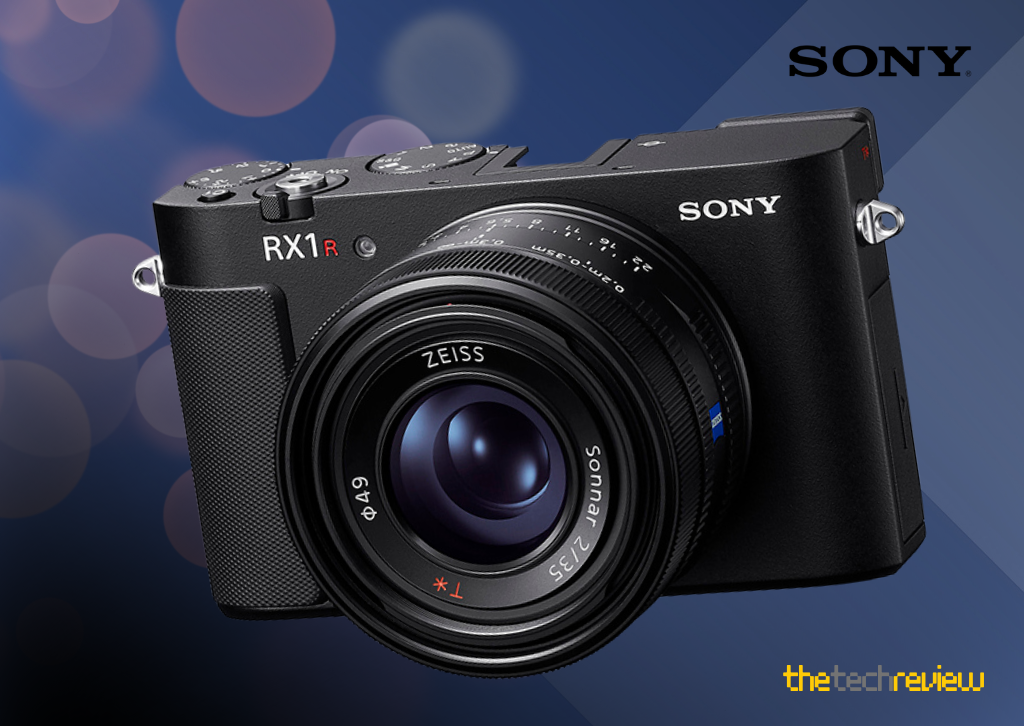
Sony RX1R III Digital Camera Review
A Deep Dive into Sony’s Latest Fixed-Lens Marvel
Table of Contents
Welcome to TheTechReview.net, your trusted source for in-depth analysis of the latest and most innovative technology. Today, we’re turning our lens towards a camera that has generated considerable buzz and, perhaps, a fair share of controversy: the Sony RX1R III. Nearly a decade after its predecessor, the RX1R II, Sony has resurrected its full-frame fixed-lens compact series, delivering a camera that is both a technological marvel and a testament to a very specific photographic philosophy.
The RX1R III isn’t just another camera; it’s a statement. In an era dominated by interchangeable lens systems and ever-increasing zoom ranges, Sony has doubled down on a niche concept: a pocketable (well, almost) full-frame camera with a single, unyielding prime lens. But this isn’t just any prime lens, and it’s certainly not just any sensor. Packing the formidable 61-megapixel sensor from Sony’s flagship Alpha 7R V and a7CR, coupled with a meticulously “micron-adjusted” Zeiss Sonnar T* 35mm f/2.0 lens, the RX1R III promises uncompromising image quality in an incredibly compact form factor.
This review will delve deep into every facet of the Sony RX1R III, from its core specifications and groundbreaking features to its real-world performance. We’ll explore who this camera is truly for, who might find it less appealing, and how it stacks up against its closest competitors. Prepare for an exhaustive examination of a camera that defies conventional wisdom and carves its own path in the high-end photographic landscape.
Design and Build Quality: A Masterclass in Miniaturization
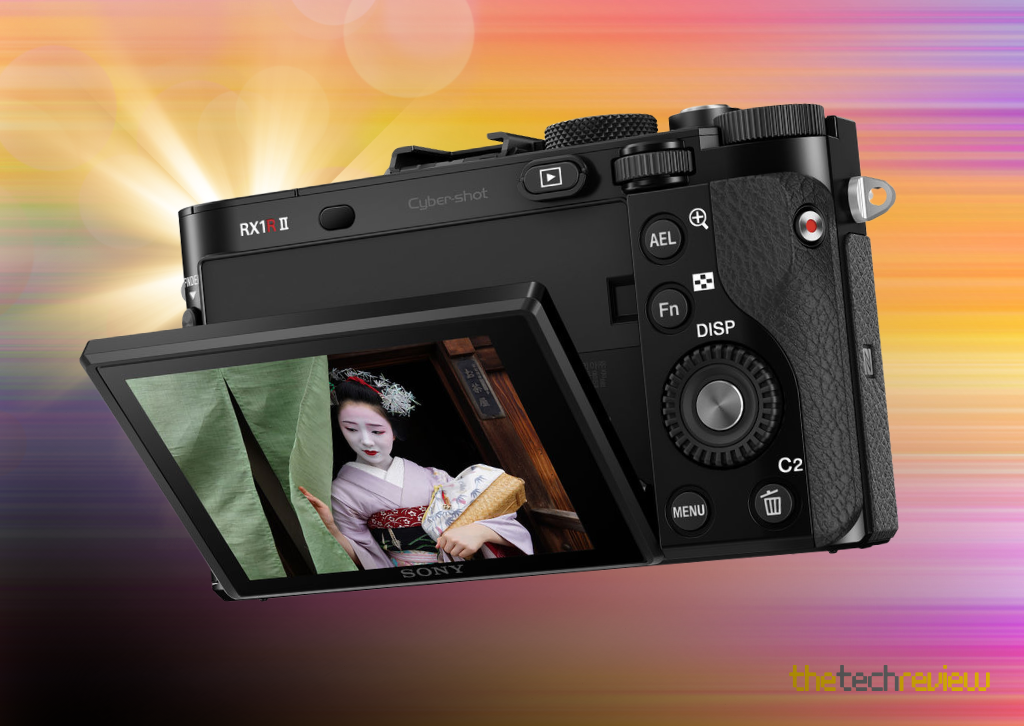
The moment you pick up the Sony RX1R III, its premium pedigree is immediately apparent. Sony has maintained the series’ reputation for exceptional build quality, crafting a body that feels solid, dense, and exquisitely finished. The camera weighs approximately 498g (1.10 lb), which is substantial for its size but contributes to a reassuringly robust feel in hand. Its dimensions of 113 x 68 x 88 mm (4.45 x 2.68 x 3.46 inches) make it remarkably compact for a full-frame camera, allowing it to slip into larger jacket pockets or small bags with ease.
The aesthetic is one of understated elegance. The stippled matte paint finish, a slight departure from its predecessor’s glossy black, gives it a more tactical and less prone-to-fingerprint appearance, though some might initially perceive it as less “premium” than a high-gloss finish. Despite this, the underlying chassis remains robust metal.
Physical controls are thoughtfully laid out, emphasizing a direct and intuitive shooting experience. The mode dial, exposure compensation dial, and shutter speed dial provide quick access to essential settings, fostering a more deliberate and manual approach to photography. The aperture is controlled via a dedicated ring on the Zeiss lens itself, a tactile pleasure that harkens back to traditional film cameras and provides immediate feedback. While the button feel has been noted by some as being “soft-touch” and lacking definitive click feedback, the overall control scheme is highly functional for its intended user.
One significant point of contention, however, is the lack of weather sealing. For a camera positioned at this price point and often touted for travel and street photography, the absence of environmental protection is a notable omission. This means users will need to exercise caution in dusty, rainy, or humid conditions, which could be a deal-breaker for those who frequently shoot outdoors in unpredictable weather.
Another design choice that has drawn criticism is the fixed LCD screen. Unlike many modern cameras, including some of its competitors, the RX1R III’s 3.0-inch, 2,359k-dot touchscreen LCD does not articulate or tilt. While the resolution is excellent, offering a sharp and vibrant display, the fixed nature limits flexibility for high-angle, low-angle, or self-portrait shooting. This decision was likely made to maintain the camera’s compact dimensions and robust build, but it undeniably impacts usability for certain shooting styles.
The electronic viewfinder (EVF) is a built-in 2.36M-dot OLED unit with approximately 0.7x magnification. While functional and a welcome inclusion, its resolution is not class-leading, especially when compared to the higher-resolution EVFs found in some competitors. Again, this is a compromise likely made to keep the camera’s footprint small. The fixed position of the EVF, however, is an improvement over the pop-up unit of the RX1R II, offering quicker access.
In summary, the RX1R III’s design is a triumph of engineering in terms of miniaturization and premium feel. It’s built like a tank, offers satisfying manual controls, and is surprisingly portable for a full-frame camera. However, the compromises in weather sealing, a fixed LCD, and a modest EVF resolution are important considerations for potential buyers.
Core Specifications and Features: Powerhouse in a Petite Package
Beneath its sleek exterior, the Sony RX1R III houses an impressive array of cutting-edge technology, largely borrowed from Sony’s acclaimed Alpha line. This is where the camera truly distinguishes itself, offering professional-grade performance in a compact form.
Sensor and Image Processor
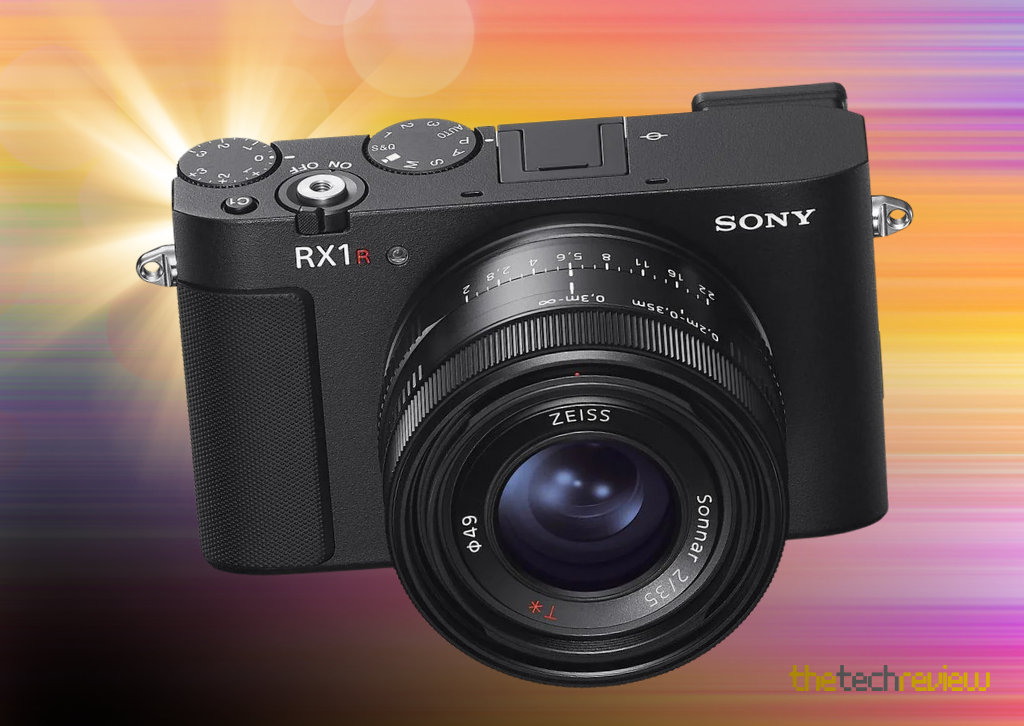
At the heart of the RX1R III is the 61.0-megapixel Full-Frame (35.8 x 23.8 mm) Exmor R BSI-CMOS sensor. This is the same high-resolution sensor found in the Sony a7R V and a7CR, renowned for its incredible detail rendition, high clarity, and excellent low-light performance. The back-illuminated (BSI) design maximizes light gathering efficiency, contributing to a wide 15-stop dynamic range and low noise characteristics across its native ISO range of 100-32000 (expandable to 50-102800). The sensor’s structure, combined with a copper wiring layer, significantly improves data transmission speed, enabling the capture of rich 14-bit, 61MP stills. The absence of an optical low-pass filter (OLPF) further enhances sharpness and detail, though it carries a minimal risk of moiré in very specific, high-frequency patterns.
Complementing this high-resolution sensor is the BIONZ XR image processing engine. This processor is a significant upgrade, offering up to 8x greater processing performance compared to previous generations. This translates to faster overall camera operation, enhanced image quality, and more fluent processing that can handle demanding tasks like high-resolution stills and advanced AI computations. The BIONZ XR also plays a crucial role in reducing rolling shutter effects and other motion distortions, ensuring cleaner rendering of moving subjects.
The Zeiss Sonnar T* 35mm f/2.0 Lens
The fixed-lens philosophy is central to the RX1R III’s identity, and the Zeiss Sonnar T* 35mm f/2.0 lens is its optical soul. This lens has been a staple of the RX1 series since its inception, celebrated for its exceptional sharpness, beautiful bokeh, and classic Zeiss rendering. While Sony states the lens has been “micron-adjusted” to match the new 61MP sensor, it’s important to note that this is not a completely new optical design. Rather, it implies tighter manufacturing tolerances and subtle calibration improvements to ensure optimal performance with the higher-resolution sensor.
The 35mm focal length is a versatile choice, often considered ideal for street photography, environmental portraits, and general-purpose shooting, offering a natural perspective that closely mimics human vision. The f/2.0 maximum aperture allows for excellent low-light performance and the creation of pleasing background blur (bokeh). The lens also features a dedicated macro ring, enabling close focusing down to 20 cm (7.9 inches), which adds to its versatility for capturing intricate details.
Autofocus System: AI-Powered Precision
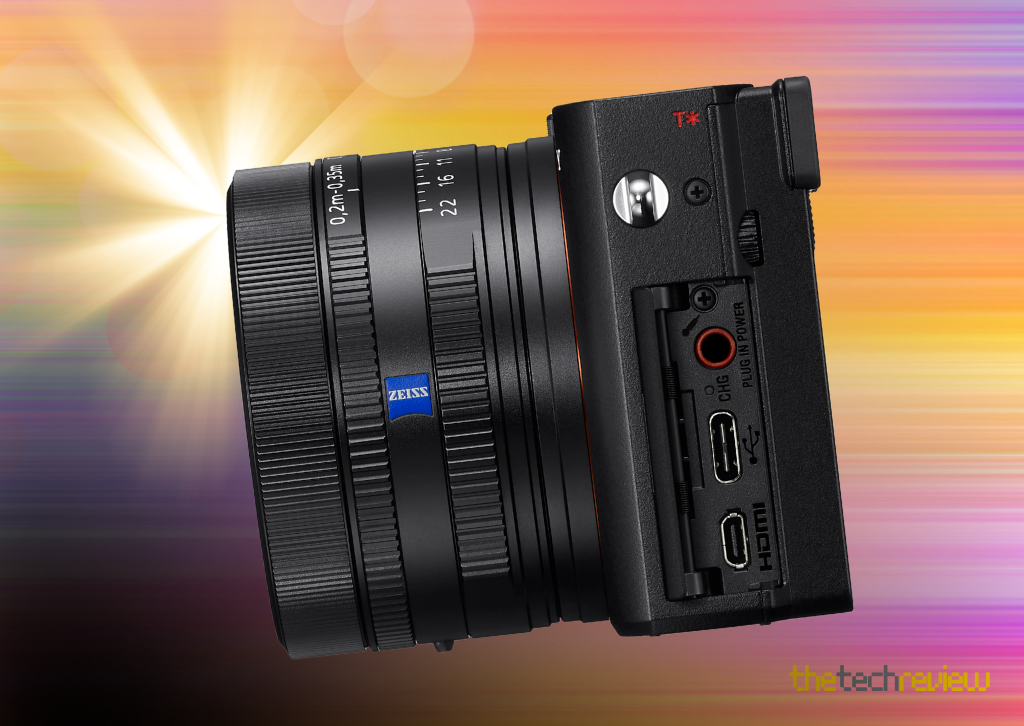
The RX1R III inherits Sony’s class-leading autofocus technology, significantly enhanced by a dedicated AI Processing Unit. This unit empowers the camera with more intelligent subject tracking and recognition capabilities, working in conjunction with Sony’s reliable Fast Hybrid AF system.
Key AF features include:
- Real-time Recognition AF: This advanced system can identify and track seven different subject types: Human (tracking body, head, and improved Eye AF), Animal (40% more accurate for various animal types, including eye/body/head recognition), Bird, Insect (detecting head or entire insect), Car/Train, and Airplane.
- Real-time Eye AF: Performance is improved by an impressive 60% thanks to human pose estimation capabilities, ensuring critical focus on the subject’s eyes even in challenging situations.
- Fast Hybrid AF: Covering 79% of the full-frame image area (or 100% in APS-C crop mode), this system incorporates a dense 693 phase-detection point grid. It offers quick and precise focusing in a wide range of lighting conditions, with sensitivity down to -4 EV. This system is available for both stills and video.
- Full-time DMF (Direct Manual Focus): This feature allows users to fine-tune focus manually using the lens’s focus ring even when autofocus is engaged, providing ultimate control.
Video Capabilities
While primarily a stills camera, the RX1R III offers robust video features:
- 4K UHD (3840 x 2160) recording at up to 30fps: It supports 10-bit 4:2:2 internal recording, providing excellent color depth and flexibility for post-production.
- Full HD (1920 x 1080) recording at up to 120fps: This allows for smooth slow-motion playback.
- Unlimited Video Recording: Unlike some cameras with 30-minute limits, the RX1R III offers unlimited video recording.
- S-Log Recording: For serious videographers, S-Log profiles provide a flat color profile for maximum dynamic range and grading flexibility.
- Digital Video Stabilization: While there’s no in-body image stabilization (IBIS) for stills, digital stabilization is available for video to help smooth out handheld footage.
- High Video Bit Rate: Up to 300Mbps for high-quality capture.
Viewfinder and LCD
- Fixed Type 3.0-inch LCD Screen: As mentioned in the design section, this 2,359k-dot touchscreen offers excellent clarity and responsiveness.
- Electronic Built-in Viewfinder (EVF): A 2.36M-dot OLED EVF with approximately 0.7x magnification provides a clear view for composing shots, especially in bright conditions.
Shutter System
The RX1R III features a versatile shutter system:
- Mechanical Shutter: Up to 1/4000 second.
- Electronic Shutter: Up to 1/8000 second, enabling silent shooting and faster speeds.
- Leaf Shutter: The lens incorporates a leaf shutter, which offers the significant advantage of flash sync across the entire shutter speed range (up to 1/4000s at f/5.6, dropping to 1/2000s at f/2). This is a huge benefit for flash photography, especially for balancing ambient light with flash. However, a limitation of leaf shutters is that the maximum shutter speed can drop at wider apertures.
Connectivity and Other Features
- Connectivity: Built-in Wi-Fi 5 (802.11ac) and Bluetooth 4.2 for seamless image transfer and remote control via Sony’s Creators’ App.
- Ports: USB-C (USB 3.2 Gen 1) for fast data transfer and in-camera charging, and a 3.5mm TRS stereo microphone input for enhanced audio recording.
- Memory Card Slot: A single SD/SDHC/SDXC card slot with UHS-II support for fast write speeds, crucial for 61MP files and 4K video.
- Multi-function Hotshoe: For mounting external flashes, microphones, or other accessories.
- RAW Shooting: Full RAW capability for maximum post-processing flexibility.
- Continuous Shooting: Up to 5.0 frames per second. While not class-leading for action, it’s respectable for a camera of this type.
- Step Crop Modes: A unique feature that allows in-camera digital cropping to simulate 50mm (29MP output) and 70mm (15MP output) fields of view. This adds a layer of versatility to the fixed 35mm lens, though it comes at the cost of resolution.
- AE Bracketing and Focus Bracketing: For advanced exposure and focus stacking techniques.
- Webcam Functionality: Can be used as a high-quality webcam via USB.
The RX1R III is a technological marvel, integrating Sony’s latest sensor, processor, and AI-driven autofocus into an incredibly small form factor. While some design choices reflect the compromises necessary for its size, the core imaging capabilities are undeniably top-tier.
Performance in the Field: A Photographic Companion
Putting the Sony RX1R III through its paces reveals a camera that, despite its niche positioning, delivers exceptional performance where it counts most: image quality and intelligent autofocus.
Image Quality: Unparalleled Detail
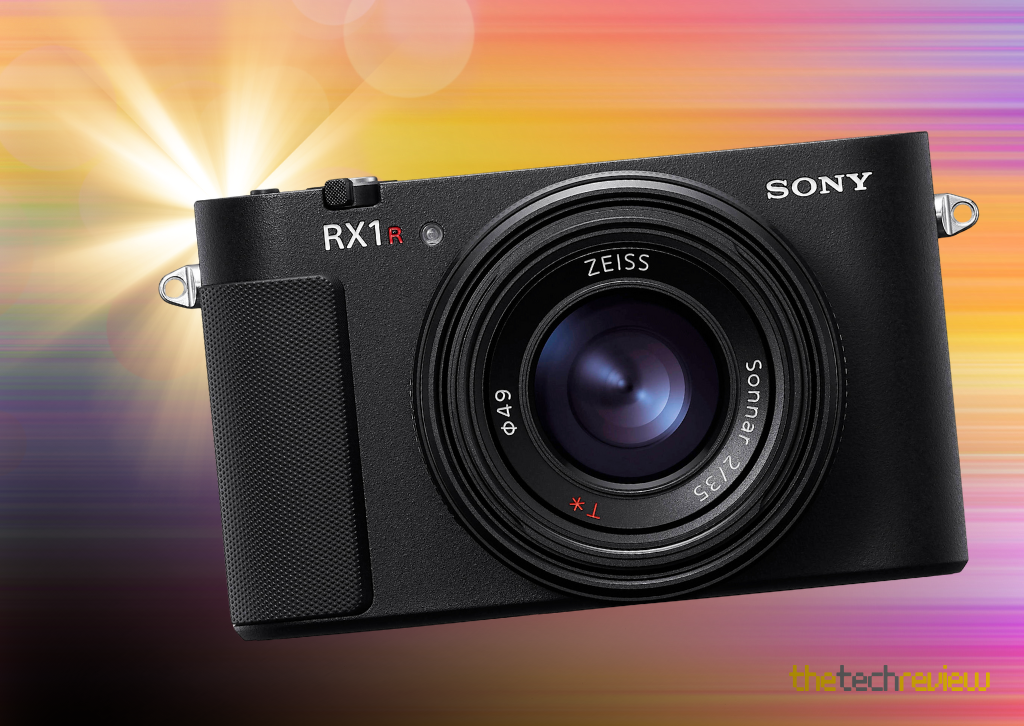
The 61-megapixel full-frame sensor is, without a doubt, the star of the show. Images captured with the RX1R III are simply stunning, boasting an extraordinary level of detail that allows for significant cropping flexibility in post-production. Landscapes reveal intricate textures, portraits show remarkable skin detail, and even distant subjects retain clarity. The dynamic range is excellent, preserving detail in both highlights and shadows, making it forgiving in high-contrast scenes.
Low-light performance is also impressive for such a high-resolution sensor. While 61MP sensors can sometimes struggle with noise at higher ISOs, the RX1R III, thanks to its BSI design and BIONZ XR processor, manages noise remarkably well. Images are clean and usable up to ISO 6400, and even ISO 12800 can produce acceptable results with some noise reduction applied, making it a capable performer in challenging light.
Lens Performance: Zeiss Magic, with Nuances
The Zeiss Sonnar T* 35mm f/2.0 lens largely lives up to its legendary reputation. Center sharpness is outstanding, even wide open at f/2, delivering crisp details. Stopping down to f/4 or f/5.6 further enhances overall sharpness and contrast across the frame.
However, it’s important to be realistic about a fixed lens designed to be compact. While excellent, corner sharpness can be a bit softer at wider apertures, improving as you stop down. This is a common characteristic of compact lens designs and not a major flaw, but something to be aware of for critical landscape or architectural work.
The lens produces beautiful bokeh, characterized by smooth transitions and a pleasant, creamy background blur, making it well-suited for portraits and isolating subjects. Some reviewers have noted a slight “soap bubble” or “onion ring” effect in specular highlights and some longitudinal chromatic aberration (LoCA) in out-of-focus areas, but these are generally minor and add a touch of character rather than detracting significantly from the image. Flare can be an issue in direct sunlight, with ghosting and vivid reflections appearing, so careful positioning or a lens hood (an optional accessory) is advisable.
Autofocus: Fast, Smart, and Reliable
The RX1R III’s autofocus system is a standout feature, benefiting immensely from the dedicated AI Processing Unit. The Real-time Tracking and Real-time Eye AF (for humans, animals, and birds) are exceptionally sticky and accurate, making it incredibly easy to acquire and maintain focus on moving subjects. Whether it’s a bustling street scene, a playful pet, or a fast-moving vehicle, the camera’s ability to lock onto and follow subjects is truly impressive. This level of AF performance, previously reserved for Sony’s larger Alpha cameras, is a significant advantage in a compact body.
The 693 phase-detection points cover a wide area, ensuring quick and precise focusing even in challenging lighting conditions down to -4 EV. For a fixed-lens camera, the AF speed and reliability are top-tier, allowing photographers to react quickly to fleeting moments.
Video Performance: Capable, but Not a Hybrid Powerhouse
The video capabilities are solid for a stills-first camera. 4K 10-bit 4:2:2 internal recording at 30fps provides high-quality footage with good color grading potential, especially with S-Log profiles. The digital stabilization helps with handheld shooting, but it’s not a substitute for optical in-body image stabilization (IBIS) for truly smooth, professional-grade video, especially when walking or panning. Rolling shutter is present, as expected with a high-resolution sensor and electronic shutter, but generally manageable for typical use. For dedicated videographers, other Sony Alpha cameras might offer more advanced video features, higher frame rates, or better stabilization.
Battery Life: An Improvement, But Still Modest
The RX1R III uses the NP-FW50 battery, a larger capacity than its predecessors. While this is a welcome upgrade, improving the CIPA rating to approximately 330 shots, it’s still relatively modest compared to the larger NP-FZ100 batteries used in many other Sony Alpha cameras. For extended shooting sessions, especially when utilizing the EVF or continuous shooting, carrying spare batteries is highly recommended. The convenience of USB-C charging is a plus, allowing for power replenishment on the go.
Ergonomics and Handling: A Personal Experience
The manual controls – aperture ring, shutter speed dial, and exposure compensation dial – contribute to a highly tactile and enjoyable shooting experience. They encourage a more deliberate and thoughtful approach to photography. However, the fixed LCD screen can be a limitation for those who prefer to shoot from unconventional angles, and the EVF, while functional, isn’t as immersive as those found in larger, more expensive cameras. The lack of an AF joystick, despite the body redesign, is also a minor ergonomic oversight for some users who prefer this method for quick focus point selection.
Overall, the Sony RX1R III delivers an exceptional photographic experience for its target audience. Its image quality is superb, the autofocus is class-leading, and the manual controls are a joy to use. While it has its compromises in terms of weather sealing, screen articulation, and battery life, these are largely trade-offs for its unique compact, full-frame, fixed-lens design.
Best Uses: Where the RX1R III Shines
The Sony RX1R III is not a general-purpose camera for everyone. Its unique combination of features and form factor makes it exceptionally well-suited for specific photographic disciplines and user preferences.
- Street Photography: This is arguably the RX1R III’s spiritual home. Its compact, unassuming size makes it less intimidating than larger cameras, allowing photographers to blend into the environment and capture candid moments without drawing undue attention. The 35mm f/2.0 lens is a classic street photography focal length, offering a natural perspective. The lightning-fast and accurate AI-driven autofocus, especially Real-time Tracking and Eye AF, ensures that fleeting moments are captured with critical sharpness. The silent electronic shutter is also a huge advantage for discreet shooting.
- Travel Photography: For photographers who prioritize image quality but want to travel light, the RX1R III is an ideal companion. Its full-frame sensor delivers professional-grade results without the bulk of an interchangeable lens kit. It’s perfect for capturing stunning landscapes, cityscapes, and portraits while exploring new destinations, fitting easily into a small day bag. The high resolution also means you can crop significantly if you can’t carry additional lenses.
- Documentary and Reportage Photography: The camera’s unobtrusive nature, combined with its robust build and exceptional image quality, makes it suitable for documentary work where blending in is crucial. Its reliable autofocus and high-resolution sensor ensure that important moments are captured with clarity and detail.
- Intentional and Slow-Paced Photography: The fixed 35mm lens encourages a more deliberate and thoughtful approach to composition. Instead of relying on zoom, photographers are prompted to “zoom with their feet,” engaging more deeply with their subjects and surroundings. The tactile manual controls further enhance this experience, making photography a more hands-on and meditative process.
- Environmental Portraiture: The 35mm f/2.0 lens is excellent for environmental portraits, allowing you to capture both the subject and their surroundings in a flattering way. The wide aperture provides pleasing background separation, and the advanced Eye AF ensures sharp focus on the subject’s eyes.
- Everyday Carry (EDC) for Enthusiasts: For the passionate photographer who wants to carry a high-quality camera everywhere, ready to capture life’s spontaneous moments, the RX1R III fits the bill. It’s a luxury item, but one that rewards constant companionship with exceptional images.
Who is the Sony RX1R III For?
The Sony RX1R III targets a very specific and discerning demographic. It’s not a camera for the masses, but rather for those who appreciate its unique blend of features and are willing to invest in it.
- The Affluent Enthusiast: This is perhaps the primary audience. Buyers who have disposable income and are looking for a premium, high-performance compact camera that offers the absolute best image quality in its class. They likely already own other camera systems but want a highly capable, portable option for personal projects or specific shooting scenarios.
- The Discerning Professional (as a secondary camera): While not a primary workhorse due to its fixed lens and single card slot, many professionals might find the RX1R III an excellent secondary camera for personal work, street photography, or when they need to be discreet without sacrificing image quality. Its 61MP sensor can complement their existing high-resolution Alpha bodies.
- The Minimalist Photographer: Those who embrace the “less is more” philosophy and prefer to master a single focal length. They value the simplicity and focus that a fixed lens provides, believing it enhances their creative vision.
- Street and Travel Photographers: As detailed in the “Best Uses” section, these genres align perfectly with the RX1R III’s strengths.
- Sony Alpha System Owners: While the fixed lens means no lens compatibility, the familiar menu system, BIONZ XR processor, and advanced AF system will make the transition seamless for existing Sony users, providing a consistent user experience.
- Collectors and Connoisseurs: Given its niche appeal and premium pricing, the RX1R III might also appeal to camera collectors or those who appreciate finely crafted, high-performance photographic tools as much for their engineering as for their utility.
Who Won’t Like the Sony RX1R III?
Just as the RX1R III is perfect for a select group, it will be entirely unsuitable for many others. Its compromises and unique design choices mean it’s not a universal solution.
- The Budget-Conscious Photographer: With a price tag exceeding $5,000 USD, the RX1R III is an extremely expensive camera. For most photographers, this budget could purchase a high-end interchangeable lens mirrorless system with multiple lenses, offering far greater versatility.
- Photographers Needing Versatility: The fixed 35mm lens is a creative choice, but it’s inherently limiting. If you need to shoot wide-angle landscapes, telephoto wildlife, or macro subjects (beyond its close-focusing capabilities) without digital cropping, this camera will frustrate you.
- Video-First Creators: While it offers 4K 10-bit video, the lack of in-body image stabilization (IBIS), limited high frame rate options (only 120fps in FHD), and a fixed screen make it less ideal for serious videography compared to dedicated video cameras or even hybrid mirrorless cameras.
- Action and Sports Photographers: A continuous shooting rate of 5.0fps is modest for fast-paced action, and the fixed lens is impractical for tracking distant subjects.
- Photographers Requiring Durability/Weather Sealing: The absence of weather sealing is a significant drawback for anyone shooting in challenging outdoor conditions, rain, dust, or extreme environments.
- Those Who Rely on Articulating Screens: The fixed LCD screen is a deal-breaker for photographers who frequently shoot from unusual angles, require a vari-angle screen for video, or prefer a flip-up screen for vlogging or self-portraits.
- Users Demanding Long Battery Life: While improved, the NP-FW50 battery still offers a relatively short CIPA rating of 330 shots. Professionals on long shoots or casual users who don’t want to carry multiple spares might find this limiting.
- Professionals Needing Dual Card Slots: For critical professional work, a single SD card slot represents a single point of failure. Many professionals prefer dual slots for immediate backup and peace of mind.
- Anyone Expecting a “Do-It-All” Camera: The RX1R III is a specialist tool. If you’re looking for a camera that can handle every photographic situation with equal grace, its fixed lens and other compromises will quickly become apparent.
- Those Who Prefer a Larger, More Substantial Grip: While compact, some photographers with larger hands might find the small grip less comfortable for extended periods, especially without an optional grip accessory.
Comparison Chart: RX1R III vs. the Competition
The Sony RX1R III operates in a highly specialized, premium compact camera segment. Its direct competitors are few but formidable, each offering a distinct philosophy. Here’s how it stacks up against some of its closest rivals: the Leica Q3, Fujifilm X100VI, Ricoh GR III/IIIx, and even Sony’s own a7CR with a small prime lens.
| Feature | Sony RX1R III | Leica Q3 | Fujifilm X100VI | Ricoh GR III / IIIx | Sony a7CR (with Sigma 35mm f/2) |
|---|---|---|---|---|---|
| Sensor Size/Res. | Full-Frame 61MP BSI-CMOS | Full-Frame 60.3MP CMOS | APS-C 40.2MP X-Trans CMOS 5 HR | APS-C 24.2MP CMOS | Full-Frame 61MP BSI-CMOS |
| Lens (Focal/Aperture) | Zeiss Sonnar T* 35mm f/2.0 | Summilux 28mm f/1.7 (or 43mm f/2 for Q3 43) | Fujinon 23mm f/2.0 (35mm equiv.) | GR Lens 18.3mm f/2.8 (28mm equiv.) / 26.1mm f/2.8 (40mm equiv.) | Interchangeable (e.g., Sigma 35mm f/2) |
| Image Stabilization | Digital (Video Only) | Optical (Lens-based) + IBIS | In-Body Image Stabilization (IBIS) | In-Body Image Stabilization (IBIS) | In-Body Image Stabilization (IBIS) |
| Viewfinder | Built-in EVF (2.36M-dot OLED) | Built-in EVF (5.76M-dot OLED) | Hybrid (Optical/EVF – 3.69M-dot OLED) | None (Optional external EVF) | Built-in EVF (2.36M-dot OLED) |
| LCD Screen | 3.0″ Fixed Touchscreen (2.36M-dot) | 3.0″ Tilting Touchscreen (1.84M-dot) | 3.0″ Tilting Touchscreen (1.62M-dot) | 3.0″ Fixed Touchscreen (1.03M-dot) | 3.0″ Tilting Touchscreen (1.03M-dot) |
| Video Capabilities | 4K 30p 10-bit 4:2:2 | 8K 30p, 4K 60p 10-bit 4:2:2 | 6.2K 30p, 4K 60p 10-bit 4:2:2 | 1080p 60p | 4K 60p 10-bit 4:2:2 |
| Weather Sealing | No | Yes (Dust/Splash Resistant) | Yes (Weather Resistant) | No | Yes (Dust/Moisture Resistant) |
| Dimensions (approx.) | 113 x 68 x 88 mm | 130 x 80 x 91.9 mm | 128 x 74.8 x 53.3 mm | 109.4 x 61.9 x 35.2 mm | 124 x 71.1 x 63.6 mm (body only) |
| Weight (approx.) | 498 g (1.10 lb) | 718 g (1.58 lb) | 478 g (1.05 lb) | 262 g (0.58 lb) | 515 g (1.13 lb) (body only) |
| Price (approx.) | $5,098 | $6,735 | $1,599 | $1,146 (GR III HDF) | $2,998 (body + lens, approx.) |
- Key Takeaways from the Comparison:
- Resolution King (with Q3): The RX1R III shares its 61MP full-frame sensor with the Leica Q3, putting them both at the pinnacle of compact camera resolution. The Fujifilm X100VI and Ricoh GR series, while excellent, use smaller APS-C sensors with lower megapixel counts.
- Fixed Lens Philosophy: All cameras in this comparison (except the a7CR) are fixed-lens cameras, but they differ in focal length. The RX1R III’s 35mm is a versatile middle ground. The Leica Q3 offers a wider 28mm (or 43mm in the Q3 43), while the X100VI is 35mm equivalent, and the GR series offers 28mm or 40mm equivalents.
- Image Stabilization: This is a major differentiator. The RX1R III lacks IBIS, relying only on digital stabilization for video. The Leica Q3, X100VI, and Ricoh GR III/IIIx all feature in-body image stabilization, a significant advantage for low-light shooting and video. The a7CR also has IBIS.
- Viewfinder & Screen: The Leica Q3 boasts a significantly higher resolution EVF and a tilting screen, offering a more premium viewing experience and greater flexibility. The X100VI’s hybrid viewfinder is unique and beloved by many. The RX1R III’s fixed screen is a notable limitation compared to its peers.
- Video Capabilities: The Leica Q3 and Fujifilm X100VI offer more advanced video features, including higher resolutions and frame rates (8K/4K 60p) and better codecs, making them more capable hybrid cameras.
- Weather Sealing: The Leica Q3 and Fujifilm X100VI offer some level of weather sealing, providing greater peace of mind in adverse conditions, which the RX1R III lacks.
- Price: The RX1R III sits squarely in the premium segment, priced below the Leica Q3 but significantly above the Fujifilm X100VI and Ricoh GR series. The Sony a7CR with a comparable prime lens offers similar image quality and IBIS at a lower price, albeit in a slightly larger, interchangeable-lens package.
- Portability: The Ricoh GR III/IIIx are the undisputed champions of true pocketability. The RX1R III is very compact for a full-frame, but still not truly “pocketable” for most.
The comparison highlights that the RX1R III is a niche product. It offers top-tier image quality and autofocus in a compact full-frame body with a beloved 35mm prime, but it makes compromises in stabilization, screen articulation, and weather sealing that its competitors, particularly the Leica Q3 and Fujifilm X100VI, address. For those prioritizing ultimate resolution and a fixed 35mm full-frame experience above all else, the RX1R III stands out. For others, the versatility, IBIS, or price point of competitors might be more appealing.
Q&A: Addressing Your Burning Questions
We’ve covered a lot of ground, but here are some frequently asked questions about the Sony RX1R III to further clarify its capabilities and quirks:
Q1: Is the Zeiss 35mm f/2.0 lens on the RX1R III a new design, or is it the same as previous models? A1: Sony has stated that the lens has been “micron-adjusted” to match the new 61MP sensor. This implies tighter manufacturing tolerances and subtle calibration improvements to optimize performance with the higher resolution, but it is not a fundamentally new optical design. It’s the same beloved lens formula from its predecessors.
Q2: Does the Sony RX1R III have in-body image stabilization (IBIS)? A2: No, the RX1R III does not feature in-body image stabilization (IBIS) for stills. It does offer digital image stabilization for video recording, which helps smooth out handheld footage to some extent, but it’s not as effective as optical or sensor-shift IBIS. This is a notable omission compared to many modern cameras, including some of its direct competitors.
Q3: Is the RX1R III weather-sealed? Can I use it in the rain or dusty environments? A3: Unfortunately, the Sony RX1R III does not have official weather sealing. It’s recommended to exercise caution and protect the camera when shooting in adverse weather conditions, dusty environments, or near water. This is a significant consideration for outdoor photographers.
Q4: What is the battery life like on the RX1R III? A4: The RX1R III uses the NP-FW50 battery, which is an improvement in capacity over the very small batteries in previous RX1 models. The CIPA rating is approximately 330 shots per charge. While better, it’s still relatively modest for a modern camera, especially if you’re shooting a lot of video, using the EVF extensively, or shooting continuously. Carrying spare batteries is highly recommended for extended use.
Q5: Why is the Sony RX1R III so expensive? A5: The high price tag (over $5,000 USD) stems from several factors. Firstly, it integrates Sony’s top-tier 61MP full-frame sensor and BIONZ XR processor into an incredibly compact body, which requires advanced engineering and miniaturization. Secondly, the fixed Zeiss Sonnar T* 35mm f/2.0 lens is a high-quality, precision-engineered optic. Thirdly, the RX1 series has always been positioned as a premium, niche product, often seen as a luxury item for discerning photographers. Its limited production runs and focus on prestige also contribute to the cost, similar to how luxury watches or cars are priced.
Q6: Is the RX1R III good for video, given its high-resolution sensor? A6: The RX1R III is capable of capturing high-quality 4K UHD video at up to 30p with 10-bit 4:2:2 internal recording, which is excellent for color grading. It also offers S-Log profiles and unlimited recording. However, for serious videographers, the lack of IBIS (leading to less stable handheld footage), the absence of higher frame rates like 4K 60p (which some competitors offer), and the fixed LCD screen might make it less ideal than dedicated video cameras or more video-centric hybrid mirrorless cameras. It’s a solid stills camera that can shoot good video, rather than a primary video tool.
Q7: Can I attach other lenses to the Sony RX1R III? A7: No, the Sony RX1R III features a fixed 35mm f/2.0 lens. It is not an interchangeable lens camera. This is a core part of its design philosophy, aiming for optical optimization and compactness with a single, high-quality prime. If you need lens versatility, an interchangeable lens system like Sony’s Alpha series (e.g., a7CR) would be a more suitable choice.
Q8: What are the “Step Crop Modes” and how do they work? A8: The Step Crop Modes are an in-camera digital cropping feature that allows you to simulate different focal lengths using the fixed 35mm lens. You can digitally crop to approximate a 50mm field of view (resulting in a 29MP image) or a 70mm field of view (resulting in a 15MP image). While convenient for framing, it’s important to remember these are digital crops, meaning you lose resolution compared to capturing the full 61MP image and cropping in post-production. They are useful for quick in-camera composition and reducing file sizes when a tighter crop is desired.
Conclusion: A Niche Masterpiece for the Discerning Few
The Sony RX1R III is a fascinating and undeniably impressive camera that occupies a unique space in the photographic world. It’s a bold statement from Sony, demonstrating their commitment to pushing the boundaries of miniaturization while delivering uncompromising image quality.
Its strengths are profound: a class-leading 61-megapixel full-frame sensor, paired with a superb Zeiss 35mm f/2.0 lens, delivers breathtaking detail and beautiful rendering. The AI-powered autofocus system is nothing short of revolutionary in a compact body, offering unparalleled speed and accuracy for tracking a wide range of subjects. The premium build quality and tactile manual controls make it a joy to operate, fostering a more deliberate and engaging photographic experience. For street photography, travel, and environmental portraits, it is an exceptional tool that allows photographers to capture stunning images discreetly and with remarkable clarity.
However, the RX1R III is not without its compromises, and these are significant. The exorbitant price tag immediately places it out of reach for most photographers. The lack of in-body image stabilization, a fixed LCD screen, and the absence of weather sealing are notable drawbacks, especially when considering its premium positioning and the features offered by some competitors. The single SD card slot and modest battery life (despite improvements) might also deter professionals or those planning extended shoots.
Ultimately, the Sony RX1R III is a highly specialized instrument for a very specific audience. It’s for the affluent enthusiast or professional who craves the absolute pinnacle of full-frame image quality in the most compact fixed-lens form factor possible. It’s for those who appreciate the art of photography with a single, perfectly matched prime lens and who are willing to pay a premium for such a focused, high-performance tool.
If you are a photographer who values ultimate resolution, cutting-edge autofocus, and a truly premium shooting experience in a compact, fixed-lens body, and if the price and its inherent compromises don’t deter you, then the Sony RX1R III might just be your dream camera. For everyone else, there are more versatile, more affordable, and arguably more practical options available. But for its intended audience, the RX1R III stands as an uncompromising masterpiece, a testament to what’s possible when engineering prowess meets a singular photographic vision.
Check out all our Photography Reviews
Photography
PolarPro LightLeak 28mm f/11 Lens: A Creative Tool for Intentional Imperfection
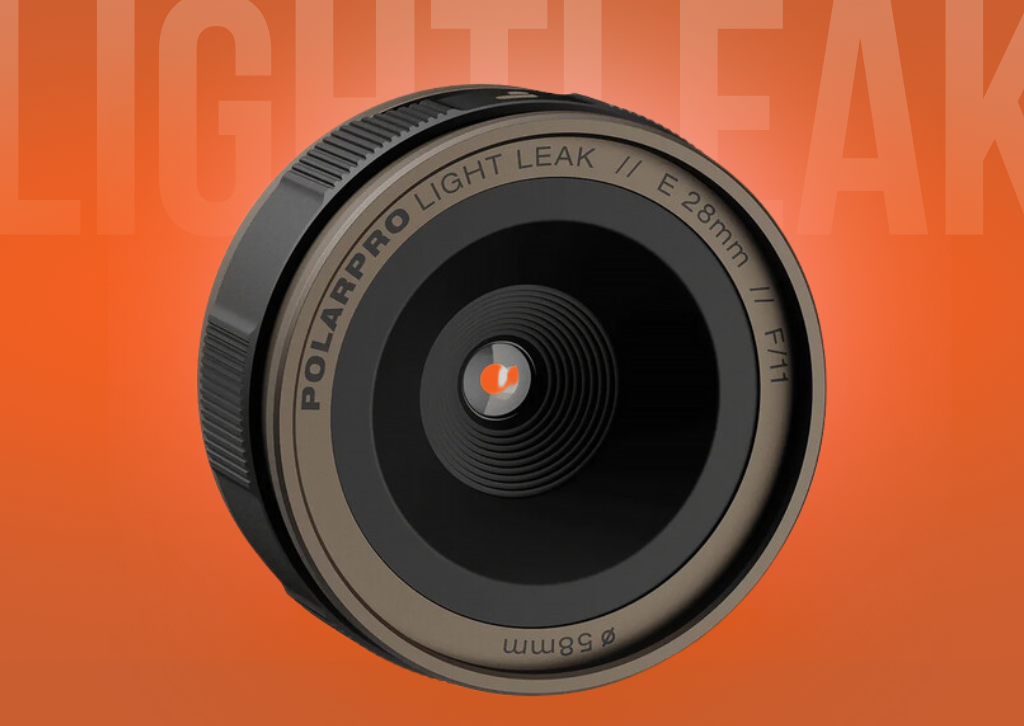
In an age where lens manufacturers obsessively pursue optical perfection—eliminating every trace of aberration, flare, and distortion—PolarPro has taken a refreshingly contrarian approach with their LightLeak series. The LightLeak 28mm f/11 lens deliberately embraces the imperfections that engineers typically spend careers trying to eliminate. This isn’t a lens for pixel-peepers or technical perfectionists; it’s a creative instrument designed to inject character, atmosphere, and a distinctly analog aesthetic into digital photography.
Build Quality and Design
The PolarPro LightLeak 28mm feels substantial in hand, with an all-metal construction that exudes quality. The lens barrel features a beautifully machined design with smooth focus and aperture rings that provide tactile feedback without being overly stiff. At approximately 200 grams, it strikes a nice balance—hefty enough to feel premium but light enough for all-day shooting without fatigue.
The lens is available in multiple mount options, including Sony E, Fujifilm X, Micro Four Thirds, and Canon RF, making it accessible to a wide range of mirrorless camera users. The compact form factor means it doesn’t overwhelm smaller camera bodies, and the 49mm filter thread is a common size that won’t require you to purchase new filters if you already have a collection.
One particularly thoughtful design element is the aperture ring, which clicks confidently at each stop. While the lens is fixed at f/11, having a physical ring adds to the tactile, deliberate shooting experience that this lens encourages. The focus ring operates smoothly through its range, though given the creative nature of this lens, precise focus becomes less critical than composition and light management.
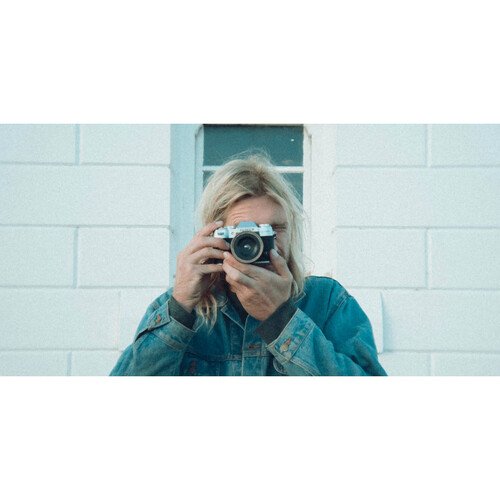
Optical Characteristics: Embracing the Flaws
Here’s where the LightLeak 28mm reveals its true purpose. This lens is engineered to produce what most manufacturers would consider optical defects. Light leaks, heavy vignetting, unpredictable flares, and soft edges aren’t bugs—they’re features. Understanding this philosophy is crucial to appreciating what PolarPro has created.
The fixed f/11 aperture might seem limiting at first glance, but it serves multiple purposes. First, it ensures a deep depth of field, keeping most scenes acceptably sharp from near to far. Second, it helps manage the intentional optical aberrations, keeping them controlled enough to be usable while still prominent. Third, it forces you to think differently about exposure, often requiring slower shutter speeds or higher ISOs that can add their own character to images.
The signature light leaks manifest in various ways depending on your light source and shooting angle. Shoot toward the sun or bright lights, and you’ll get dramatic flares, color shifts, and ethereal streaks across your frame. The effect is reminiscent of shooting with vintage lenses or deliberately damaged optics, creating images that feel lifted from another era. These characteristics aren’t uniform or predictable, which is part of the charm—each scene presents unique opportunities for creative light play.
Vignetting is pronounced, with the corners of the frame falling off into darkness in many situations. This naturally draws the eye toward the center of the composition and adds a dreamy, almost voyeuristic quality to images. The effect varies based on your subject and lighting conditions, giving you some room for creative control while maintaining that distinctive look.

Image Quality and Sharpness
Discussing “image quality” with the LightLeak 28mm requires reframing traditional metrics. By conventional standards, this lens is soft, particularly at the edges. Chromatic aberration is present, flare is abundant, and contrast can be washed out. But these characteristics are intentional, and when embraced rather than fought against, they create a distinctive aesthetic that’s difficult to replicate in post-processing.
The center sharpness at f/11 is actually quite respectable when shooting at optimal focus distances. Your main subject can be rendered with enough clarity to be recognizable and engaging while the surrounding areas drift into softer, more atmospheric territory. This combination of relative sharpness at the center and deterioration toward the edges creates natural separation between subject and environment.
Color rendering has a unique quality—images often have a slightly desaturated, vintage film-like palette that works beautifully for certain subjects. Skin tones can take on a nostalgic warmth, while landscapes gain an otherworldly, timeless quality. The lens seems to excel in golden hour and dusk lighting, where the warm ambient light interacts beautifully with the lens’s optical quirks.
Practical Shooting Experience
Using the LightLeak 28mm requires a shift in mindset. This isn’t a lens for capturing technically perfect images of your family vacation or product photography. Instead, it shines in creative, artistic applications: street photography with a vintage vibe, moody portraits, atmospheric landscapes, experimental architecture work, and music or event photography where a grainy, authentic feel enhances rather than detracts from the story.
The fixed f/11 aperture means you’ll need adequate light or a camera with good high-ISO performance. In bright daylight, you’re golden. Indoors or in lower light, you’ll be pushing your camera’s sensitivity, which can actually enhance the gritty, film-like aesthetic this lens produces. Many photographers find that pairing this lens with a bit of digital grain creates images that are nearly indistinguishable from film photography.
The 28mm focal length is versatile—wide enough for environmental shots and storytelling compositions but not so wide that it becomes difficult to manage distortion or fill the frame effectively. It’s a classic focal length that feels natural for both documentary and creative work.
Manual focus only operation means you need to slow down and be deliberate with your shooting. There’s no autofocus to rely on, which can be liberating once you embrace it. The f/11 aperture helps here, as the deep depth of field provides a generous margin for focus error. For many subjects, you can simply set the focus to a moderate distance and shoot, knowing that most of your scene will be acceptably sharp.
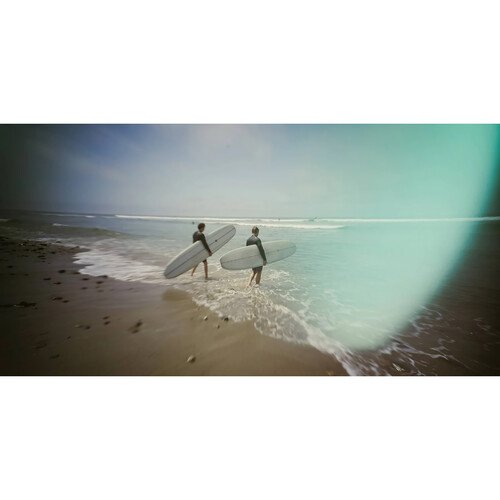
Creative Applications and Limitations
The LightLeak 28mm truly excels when you lean into its character rather than fighting it. Portrait photographers can create dreamy, romantic images with the soft edges and potential light leaks adding atmosphere that would be difficult and time-consuming to create in Photoshop. The key is positioning your subject where the lens performs best—typically in the center to center-third of the frame—and using the degraded edges as a creative element rather than a flaw.
For street photography, the lens encourages a documentary, photojournalistic approach. The vintage aesthetic it imparts makes contemporary scenes feel timeless, and the visual quirks add an authentic, unpolished quality that can enhance narrative storytelling. The compact size and manual operation also make for a discreet, contemplative shooting experience.
However, this lens isn’t for everyone or every situation. If you need clinical sharpness, accurate color reproduction, or reliability in controlled shooting environments, look elsewhere. The LightLeak 28mm is fundamentally a creative tool, not a workhorse. You wouldn’t choose it for commercial work, technical documentation, or any situation where optical perfection is the goal.
The fixed aperture also limits its versatility. You can’t open up for subject isolation or close down for maximum sharpness. You get f/11, and you work within that constraint. Similarly, the inability to control the light leaks and flares means you need to be comfortable with unpredictability. Sometimes you’ll get magical, unrepeatable results; other times, the effects might be too subtle or too overwhelming for your vision.
Value Proposition
Priced in the mid-range for specialty lenses, the LightLeak 28mm isn’t cheap, but it’s not prohibitively expensive either. The question becomes whether the unique aesthetic it provides is worth the investment. For photographers looking to expand their creative toolkit or those specifically drawn to vintage, analog aesthetics in their work, the answer is likely yes.
Consider that achieving similar effects through vintage lenses often involves hunting through used camera stores, dealing with unpredictable quality, and adapting old glass to modern mounts—often with mixed results. The LightLeak 28mm provides a controlled, repeatable version of these aesthetic qualities with modern build quality and proper communication with your camera body.
Additionally, while you can attempt to recreate these effects in post-processing, there’s something about capturing them optically that feels more authentic and organic. The way light actually behaves through this lens creates characteristics that are difficult to fake convincingly with filters or software.
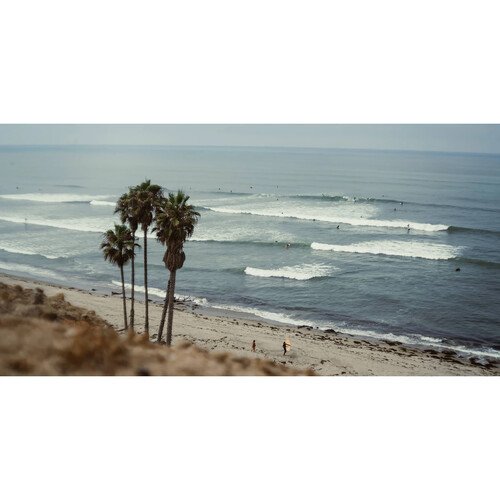
Conclusion
The PolarPro LightLeak 28mm f/11 lens is a successful execution of a singular vision: bringing analog imperfection to digital photography. It won’t replace your sharp primes or versatile zooms, but it offers something those lenses can’t—a distinctive, characterful aesthetic that feels increasingly rare in modern photography.
This lens is best suited for photographers who understand and appreciate its limitations, who see those limitations not as defects but as defining characteristics that enable a specific creative vision. If you’re drawn to the look of vintage film photography, if you find modern digital images too clinical and perfect, or if you simply want to inject more character and unpredictability into your work, the LightLeak 28mm deserves serious consideration.
It’s a lens that rewards experimentation and punishes perfectionism. It encourages you to see light differently, to embrace the unexpected, and to find beauty in imperfection. In a market saturated with technically excellent but visually similar lenses, the LightLeak 28mm stands out by zigging where others zag, making it a valuable tool for creative photographers willing to work with its unique character.

Read all our amazing Photography Reviews here
Photography
Leica D-Lux 8 Digital Camera: A Comprehensive Review
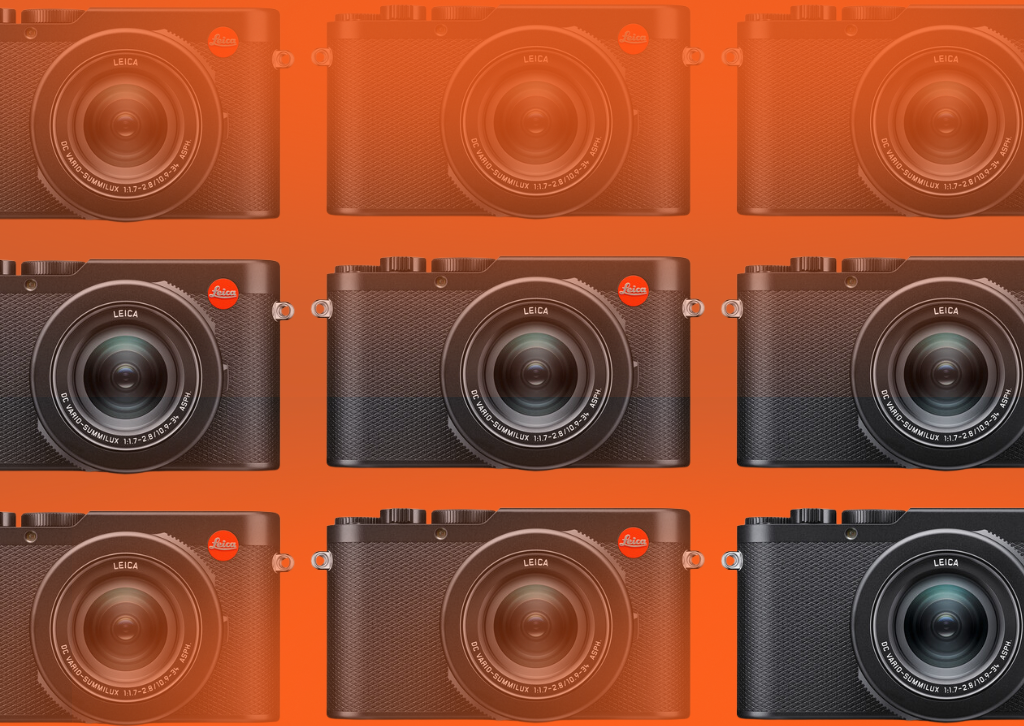
The Leica D-Lux 8 represents the latest iteration in Leica’s renowned compact camera line, offering photographers a sophisticated blend of premium build quality, exceptional optics, and modern computational photography features. As someone who has spent considerable time with this camera, I can confidently say it occupies a unique position in today’s digital camera market—one that prioritizes quality, craftsmanship, and photographic excellence over the endless megapixel race that dominates consumer electronics.
Design and Build Quality
From the moment you unbox the D-Lux 8, the Leica heritage becomes immediately apparent. The camera exudes a sense of solidity and precision that feels increasingly rare in our age of disposable electronics. Constructed with a magnesium alloy body wrapped in textured leatherette, the D-Lux 8 weighs approximately 340 grams without the battery, giving it a reassuring heft that speaks to its quality without becoming burdensome during extended shooting sessions.
The camera’s design philosophy clearly emphasizes manual control and tactile feedback. The top plate features a dedicated exposure compensation dial, a mode dial with clearly defined positions, and a beautifully knurled lens ring that rotates with perfectly damped resistance. These physical controls eliminate the need to dive into menus for fundamental photographic adjustments, allowing you to maintain focus on composition and timing rather than navigating digital interfaces.
The grip, while relatively modest in size, provides adequate purchase for secure handling. The textured thumb rest on the rear complements the front grip nicely, creating a stable three-point hold. For photographers with larger hands, the optional hand grip accessory might prove worthwhile, though I found the stock configuration perfectly serviceable for my shooting style.
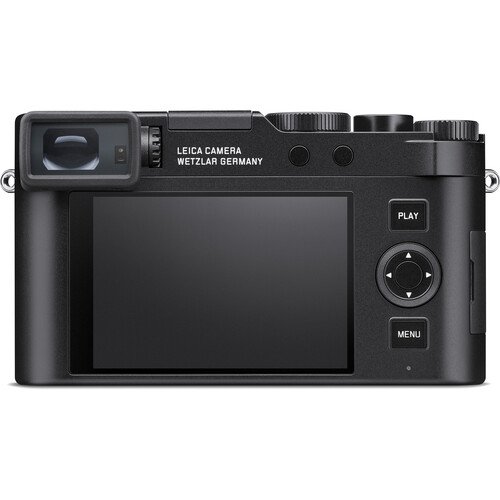
Optical Performance
At the heart of the D-Lux 8 lies a Leica DC Vario-Summilux lens with a focal range equivalent to 24-75mm in full-frame terms and a fast maximum aperture of f/1.7-2.8. This lens represents one of the camera’s most significant strengths. The optical formula delivers consistently sharp images across the zoom range, with excellent control of chromatic aberration and distortion.
The wide f/1.7 aperture at the 24mm equivalent proves particularly valuable for low-light photography and achieving pleasing background separation, even with the relatively small sensor. I was genuinely impressed by the lens’s ability to render smooth bokeh when shooting portraits or detail shots at close distances. The minimum focusing distance of just 3 centimeters in macro mode opens up fascinating possibilities for intimate product photography, food documentation, or exploring the miniature worlds that surround us daily.
Optical image stabilization works effectively to counteract camera shake, allowing for sharp handheld shots at shutter speeds that would typically produce blur. During my testing, I consistently achieved sharp images at shutter speeds two to three stops slower than I would normally attempt without stabilization.
Image Quality
The D-Lux 8 employs a Four Thirds sensor with a resolution that balances detail capture with pixel-level performance. While specification-focused consumers might fixate on megapixel counts, the D-Lux 8 demonstrates that image quality encompasses far more than raw resolution. The sensor, combined with Leica’s image processing, produces files with pleasing color science, excellent dynamic range, and well-controlled noise characteristics.
Colors straight out of camera possess a natural, film-like quality that many photographers will appreciate. Unlike some competitors that oversaturate to wow inexperienced users, the D-Lux 8 delivers colors that feel authentic and provide excellent latitude for post-processing adjustments. The standard color profile works beautifully for most situations, while the monochrome mode produces genuinely compelling black-and-white images with rich tonal gradations that honor Leica’s legendary monochrome heritage.
High ISO performance proves surprisingly capable for a compact camera. Images remain clean and detailed through ISO 1600, with noise becoming more visible but manageable through ISO 3200. Even at the highest sensitivity settings, the noise character retains a fine-grained quality that many photographers find more aesthetically pleasing than the blotchy, color-splotched noise patterns some cameras produce.
The camera’s dynamic range deserves particular mention. The sensor captures an impressive latitude of tones, preserving detail in both highlights and shadows that provides substantial flexibility during post-processing. This characteristic proves especially valuable when shooting high-contrast scenes or when exposure compromises become necessary in challenging lighting conditions.
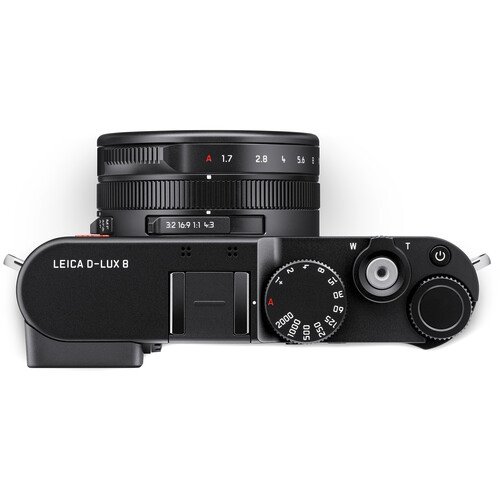
Autofocus and Performance
The autofocus system incorporates contrast-detection with depth-from-defocus technology, delivering quick and accurate focusing in most shooting scenarios. Face and eye detection work reliably for portrait photography, while the touchscreen interface allows for intuitive focus point selection by simply tapping your desired focus area.
In good lighting conditions, the autofocus responds nearly instantaneously, allowing you to capture fleeting moments without frustration. Performance does slow somewhat in dim environments, as expected with contrast-detection systems, though the built-in AF assist lamp helps when shooting nearby subjects in darkness.
Continuous shooting capabilities reach approximately 11 frames per second with continuous autofocus, sufficient for capturing moderate action or ensuring you nail the perfect expression during portrait sessions. Buffer depth proves adequate for most real-world applications, though photographers accustomed to professional sports cameras will need to moderate their expectations accordingly.
Video Capabilities
The D-Lux 8 offers comprehensive video recording options, including 4K resolution at various frame rates. Video quality impresses with the same excellent color science and sharpness that characterizes the camera’s still photography. The five-axis hybrid image stabilization for video proves particularly effective, producing smooth footage even when shooting handheld while walking.
Audio recording through the built-in stereo microphones delivers acceptable quality for casual use, though serious videographers will appreciate the external microphone input that allows for professional-grade audio capture. Headphone monitoring through the USB-C port enables real-time audio evaluation during recording.
The camera includes useful video features like focus peaking, zebras for exposure monitoring, and various creative picture styles that can dramatically alter the mood and aesthetic of your footage. Time-lapse and stop-motion capabilities expand creative possibilities for filmmakers willing to explore these techniques.
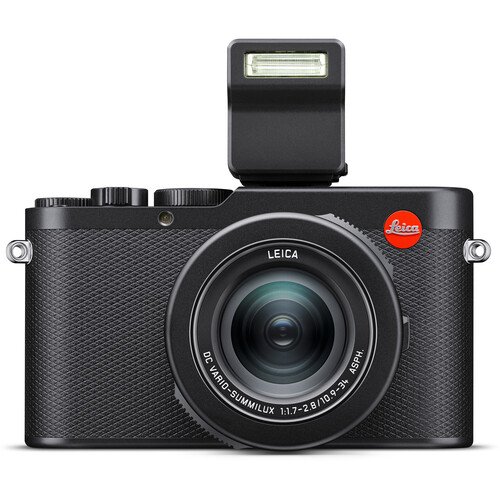
User Interface and Handling
Leica has crafted an interface that balances accessibility for newcomers with the depth demanded by experienced photographers. The touchscreen interface responds smoothly to inputs and provides an intuitive method for navigating menus and adjusting settings. The menu structure, while comprehensive, maintains logical organization that helps you locate specific functions without excessive hunting.
Physical controls complement the touchscreen beautifully. The exposure compensation dial sits perfectly positioned for thumb adjustment without removing your eye from the viewfinder. The lens control ring can be customized to adjust various parameters, including manual focus, aperture, or zoom, depending on your shooting mode and preferences.
The electronic viewfinder, while not the largest available, provides adequate resolution and refresh rate for comfortable composition. The eye sensor automatically switches between the EVF and rear screen based on proximity detection, working reliably in practice. For photographers who prefer optical viewfinders, the EVF may require an adjustment period, though the benefits of real-time exposure preview and focus magnification quickly demonstrate their value.
Connectivity and Workflow
Modern connectivity features include Wi-Fi and Bluetooth for wireless image transfer and remote camera control through Leica’s smartphone application. The app functions reasonably well, allowing for basic remote shooting and convenient image downloading to mobile devices for quick sharing on social platforms.
The USB-C port serves multiple functions, including battery charging, data transfer, and even serving as a webcam connection for video conferencing applications. This versatility eliminates the need to remove the battery for charging and simplifies cable management when traveling.
Battery Life
Battery performance provides sufficient capacity for a full day of moderate shooting, typically yielding between 300-400 shots per charge depending on usage patterns. The ability to charge via USB-C means you can replenish power using portable battery banks, laptop connections, or car chargers during travel, significantly enhancing the camera’s practical utility for extended adventures.
Value Proposition
The D-Lux 8 occupies premium pricing territory that will undoubtedly give some photographers pause. However, evaluating the camera purely through a specifications-per-dollar lens misses the broader picture of what Leica offers. This camera represents an investment in build quality that should provide reliable service for many years, optical excellence that honors Leica’s legendary standards, and an integrated shooting experience that prioritizes the craft of photography over technical gimmickry.
For photographers who value tactile controls, exceptional optics, and the satisfaction that comes from using beautifully engineered tools, the premium asks feels justified. Conversely, those primarily concerned with maximizing specifications relative to cost will find compelling alternatives that deliver more megapixels, faster burst rates, or longer zoom ranges for less money.
Final Thoughts
The Leica D-Lux 8 succeeds brilliantly at its intended purpose: providing a compact, capable camera that delivers exceptional image quality and handling for photographers who appreciate craftsmanship and optical excellence. It represents the antithesis of the disposable camera culture, offering instead a tool designed for longevity, quality, and the pure joy of making photographs.
This camera excels as a travel companion, street photography tool, or everyday carry camera for enthusiasts who want professional-grade image quality without the bulk of interchangeable lens systems. The fast lens, excellent image quality, and comprehensive manual controls create a package that encourages photographic exploration and creative expression.
The D-Lux 8 isn’t perfect—no camera is. The premium pricing may prove prohibitive for budget-conscious photographers, autofocus performance in low light trails the latest phase-detection systems, and the fixed lens design eliminates the flexibility that interchangeable lens systems provide. However, within its intended niche, the D-Lux 8 performs admirably and offers an experience that transcends mere specifications.
For photographers seeking a premium compact camera that prioritizes image quality, build excellence, and photographic craft over feature-list bragging rights, the Leica D-Lux 8 deserves serious consideration. It represents a thoughtful evolution of the compact camera concept, proving that in an age of smartphone dominance, there remains a compelling case for dedicated cameras that honor the art and discipline of photography.

Read all our amazing Photography Reviews here
Photography
Canon EOS 90D DSLR Camera: A Comprehensive Review
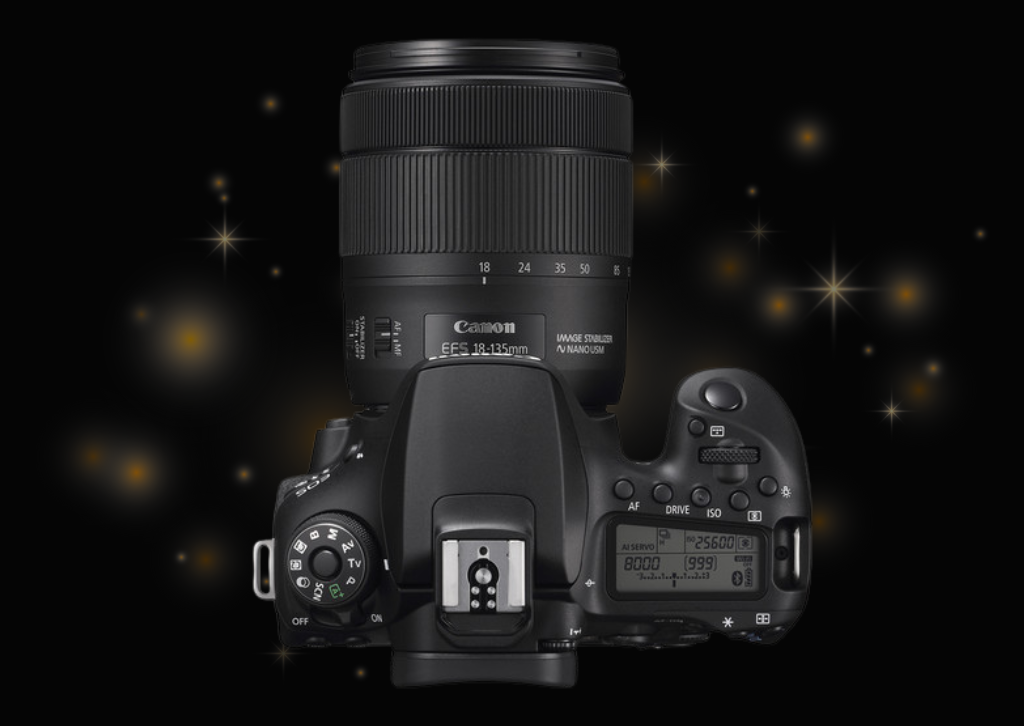
The Canon EOS 90D represents a fascinating position in Canon’s DSLR lineup—a camera that arrived at a time when mirrorless systems were rapidly gaining ground, yet managed to remind us why the traditional DSLR format still has plenty to offer. As someone who’s spent considerable time with this camera across various shooting scenarios, I can confidently say that the 90D is a powerhouse that deserves serious consideration, especially for photographers who value versatility, speed, and the optical viewfinder experience.
Build Quality and Ergonomics
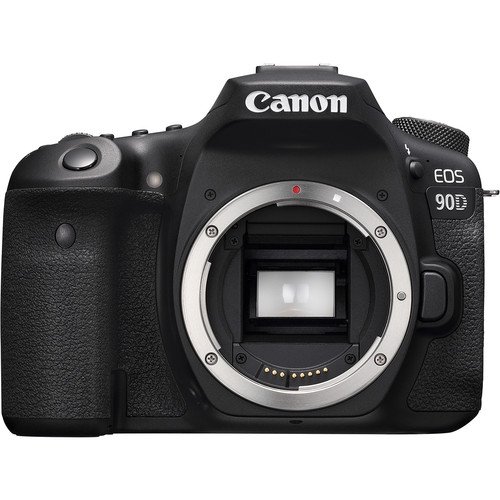
The first thing you notice when picking up the 90D is its solid, confidence-inspiring build. Canon has equipped this camera with a weather-sealed magnesium alloy body that feels substantial without being overly heavy. At approximately 701 grams with battery and card, it strikes a nice balance between durability and portability. The camera sits comfortably in hand, with a deep grip that accommodates larger lenses without causing strain during extended shooting sessions.
The button layout is quintessentially Canon, which means if you’re familiar with their ecosystem, you’ll feel right at home immediately. The controls are logically placed and fall naturally under your fingers. The rear joystick for quick autofocus point selection is particularly well-positioned, and the top LCD display provides essential shooting information at a glance. The mode dial has a locking mechanism to prevent accidental changes, and the dedicated ISO and exposure compensation buttons on top make quick adjustments effortless.
One aspect I particularly appreciate is the articulating touchscreen. Unlike a fully articulating screen, this vari-angle design flips out to the side, making it invaluable for shooting at awkward angles, whether you’re going low for a macro shot or holding the camera overhead in a crowd. The touchscreen functionality itself is responsive and intuitive, allowing you to tap to focus and even navigate through menus with ease.
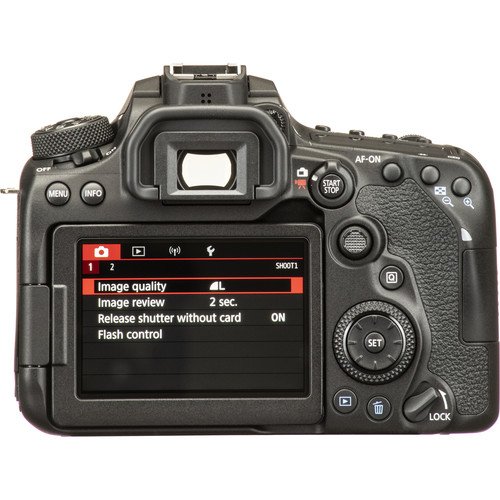
Image Quality and Sensor Performance
At the heart of the 90D lies a 32.5-megapixel APS-C CMOS sensor—the highest resolution APS-C sensor Canon has ever produced for their DSLRs. This impressive resolution delivers exceptional detail and provides plenty of room for cropping without sacrificing image quality. When paired with quality glass, the images from this sensor are remarkably sharp with excellent color reproduction that Canon is renowned for.
The dynamic range is quite good for an APS-C sensor, though it doesn’t quite match what you’d find in some competing cameras or full-frame alternatives. In practical terms, you have decent latitude for recovering highlights and shadows in post-processing, though you’ll want to be mindful of not blowing out highlights in high-contrast situations. The camera handles a wide range of lighting conditions admirably, from bright outdoor scenes to more challenging indoor environments.
Color science is an area where Canon traditionally excels, and the 90D is no exception. Straight out of camera, JPEGs display pleasing, natural-looking colors that often require minimal editing. Skin tones, in particular, are rendered beautifully, making this camera an excellent choice for portrait photography. For those who prefer to shoot RAW, the files provide substantial flexibility for post-processing while maintaining clean, detailed images.
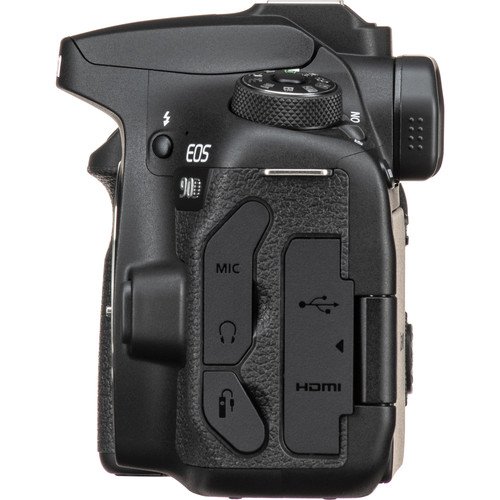
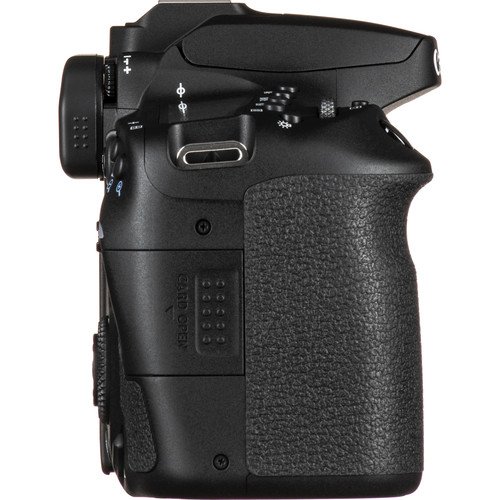
Autofocus System and Performance
The 90D features Canon’s 45-point all cross-type autofocus system when shooting through the optical viewfinder. This phase-detection system is fast, accurate, and reliable even in challenging lighting conditions. The coverage area is reasonable, though not edge-to-edge, which is typical for DSLR systems. In real-world use, I found the autofocus to be consistently reliable for general photography, portraits, and even action shots.
When you switch to Live View mode, the camera utilizes Canon’s Dual Pixel CMOS AF system, which is arguably one of the best features of this camera. The Dual Pixel AF provides 5,481 selectable autofocus positions covering approximately 88% of the frame horizontally and vertically. Face and eye detection work remarkably well, making portrait photography in Live View an absolute pleasure. The autofocus smoothly tracks subjects across the frame with impressive accuracy.
For video shooters and those who prefer composing shots on the rear screen, the Dual Pixel AF is a game-changer. It’s smooth, confident, and rarely hunts—characteristics that make it suitable for both photography and serious video work.
Continuous Shooting and Buffer
One of the 90D’s standout specifications is its continuous shooting speed of 10 frames per second when using the optical viewfinder. This makes it an excellent choice for action, sports, and wildlife photography. The camera can maintain this speed for approximately 58 RAW files or unlimited JPEGs before the buffer fills up, which is quite impressive and should satisfy most shooting scenarios.
The combination of fast continuous shooting and reliable autofocus makes the 90D a capable tool for capturing fast-moving subjects. Whether you’re photographing birds in flight, sports action, or energetic children, the camera gives you the tools to freeze the moment reliably.
Video Capabilities
The Canon EOS 90D is a genuinely competent video camera, offering uncropped 4K recording at up to 30 frames per second. The fact that it shoots 4K without a crop is significant for an APS-C camera, as it means your lenses maintain their intended field of view. The 4K footage is sharp and detailed, though it’s worth noting that continuous autofocus during 4K recording is available but limited to contrast-detection AF rather than the superior Dual Pixel AF system used in 1080p mode.
For 1080p recording, you have options up to 120 frames per second, perfect for creating smooth slow-motion footage. The Dual Pixel AF in 1080p mode is excellent, providing smooth and reliable focus tracking that rivals many dedicated video cameras. The articulating screen, headphone jack, and microphone input make this a well-equipped camera for content creators and videographers.
One limitation to be aware of is the lack of in-body image stabilization. You’ll need to rely on optically stabilized lenses for steady handheld footage, or use a gimbal for more dynamic movement. Additionally, there’s a 30-minute recording limit per clip, which is common among cameras to avoid European taxation rules, but can be restrictive for some video applications.
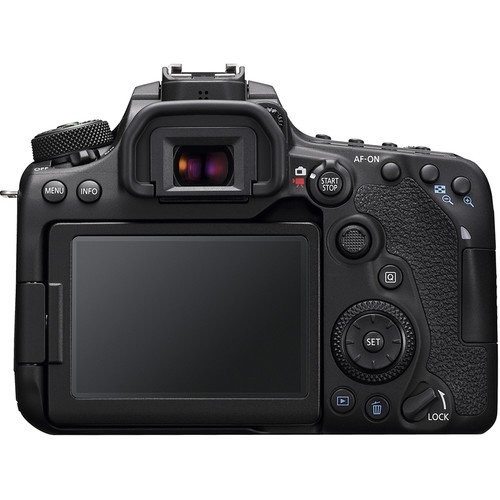
ISO Performance and Low Light
The 90D offers a native ISO range of 100-25,600, expandable to 51,200. Low-light performance is solid, with clean, usable images up to around ISO 3200. As you push into the higher ISO ranges, noise becomes more apparent, but it remains well-controlled and maintains an appealing grain structure rather than looking splotchy or color-shifted.
For most everyday shooting scenarios, the high ISO performance is more than adequate. I’ve successfully shot indoor events and evening scenes at ISO 6400 with results that clean up nicely with a bit of noise reduction in post. While it may not match the low-light prowess of newer full-frame cameras, it performs admirably for its class.
Battery Life
The 90D uses Canon’s LP-E6N battery, and battery life is another area where DSLRs still hold an advantage over mirrorless cameras. The official CIPA rating is approximately 1,300 shots per charge when using the optical viewfinder, which is excellent. In real-world use, especially if you’re mixing viewfinder and Live View shooting, you can expect to get through a full day of moderate shooting on a single battery. If you’re shooting video extensively, you’ll want to have spare batteries on hand as video recording drains the battery much faster.
Who Should Buy the Canon EOS 90D?
The 90D is ideally suited for several types of photographers. Enthusiasts looking to upgrade from an entry-level DSLR will find a significant step up in performance, features, and build quality. Wildlife and sports photographers on a budget will appreciate the fast continuous shooting speed and the effective focal length multiplier that comes with the APS-C sensor. The camera is also excellent for content creators who need both strong photo and video capabilities in a single package.
The high-resolution sensor makes it appealing for landscape photographers who want maximum detail, while the reliable autofocus and good color science make it a strong choice for portrait work. Parents documenting growing families will find it has more than enough power for all occasions while remaining relatively approachable to use.
Final Thoughts
The Canon EOS 90D is a mature, refined DSLR that represents the culmination of decades of Canon’s experience in building cameras of this type. It may not represent the cutting edge of camera technology in an era increasingly dominated by mirrorless systems, but it offers a compelling package of features, performance, and value that shouldn’t be overlooked.
The combination of 32.5 megapixels, 10fps shooting, excellent autofocus systems, and strong video capabilities makes this an incredibly versatile tool. The optical viewfinder provides a direct, lag-free view of your subject, and the substantial battery life means less worry about running out of power at critical moments. For photographers invested in Canon’s EF and EF-S lens ecosystem, the 90D is a natural choice that lets you leverage your existing glass without adapters.
While it’s true that mirrorless cameras offer certain advantages in size, weight, and cutting-edge features, the 90D proves that there’s still life in the DSLR format. It’s a camera that gets out of your way and lets you focus on capturing great images, and sometimes that’s exactly what you need. Whether you’re a dedicated enthusiast, a professional needing a reliable backup, or someone who simply prefers the DSLR shooting experience, the Canon EOS 90D delivers the goods with confidence and capability.

Read all our amazing Photography Reviews here
-

 Photography3 months ago
Photography3 months agoSony FE 16mm f/1.8 G Review: The Ultra-Wide Prime for the Modern Creator
-
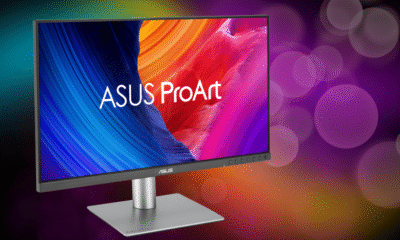
 Computers3 months ago
Computers3 months agoAsus ProArt Display 6K PA32QCV Review: A Visual Feast for Professionals
-

 Tablets5 months ago
Tablets5 months agoClash of the Titans: 13″ iPad Pro M4 vs. Samsung Galaxy Tab S10 Ultra – Which Premium Tablet Reigns Supreme?
-

 Home Tech3 months ago
Home Tech3 months agoThe Guardian of Your Threshold: An In-Depth Review of the Google Nest Doorbell
-

 Computers4 months ago
Computers4 months agoASUS Zenbook Duo: A Pretty Awesome Dual-Screen Laptop
-

 Photography4 months ago
Photography4 months agoAdobe’s “Project Indigo” is the iPhone Camera App We’ve Been Waiting For, and It’s Awesome
-

 Photography3 months ago
Photography3 months agoDJI Osmo 360 go: The Next Generation of Immersive Storytelling?
-

 Health Tech3 months ago
Health Tech3 months agoLumen Metabolism Tracker: A Deep Dive into Your Metabolic Health
-

 Computers4 months ago
Computers4 months agoApple Mac Studio Review: A Desktop Powerhouse Redefined
-

 Home Tech3 months ago
Home Tech3 months agoRevolution R180 Connect Plus Smart Toaster: More Than Just Toast?
-

 Computers4 months ago
Computers4 months agoSamsung 15.6” Galaxy Book5 360 Copilot AI Laptop: A Deep Dive into the Future of Productivity
-

 Buying Guides4 months ago
Buying Guides4 months agoThe Ultimate Workout Soundtrack: The Best Wireless Headphones for Your Fitness Journey











